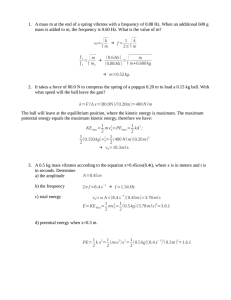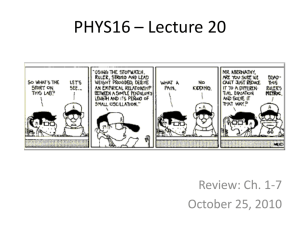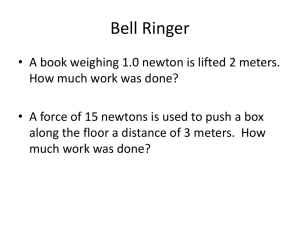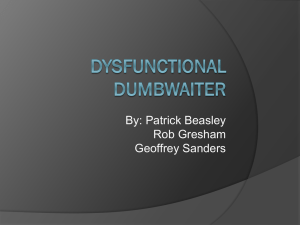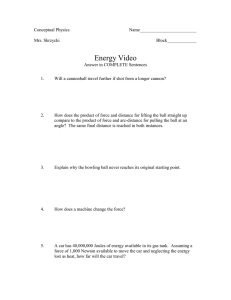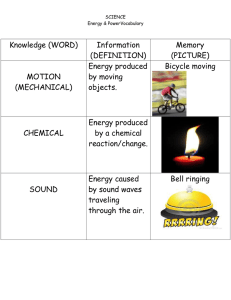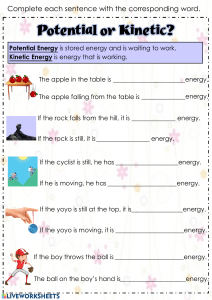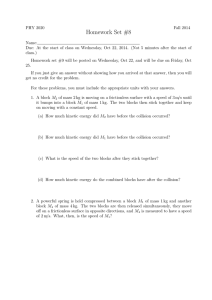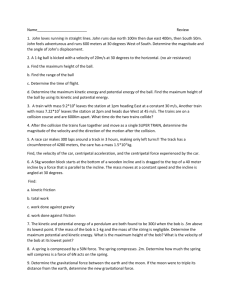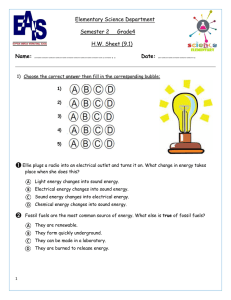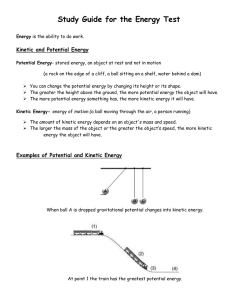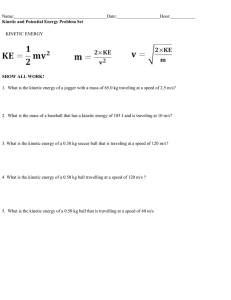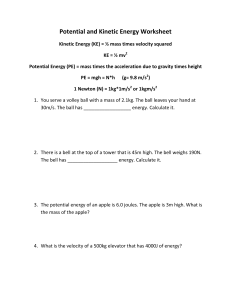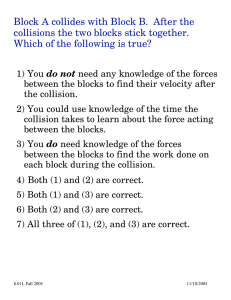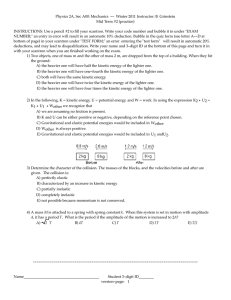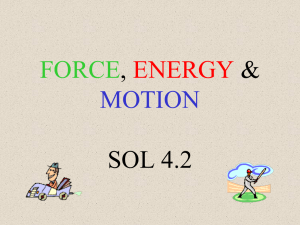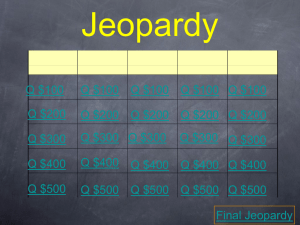PHYS-2010: Dr. Luttermoser's General Physics I Course
advertisement
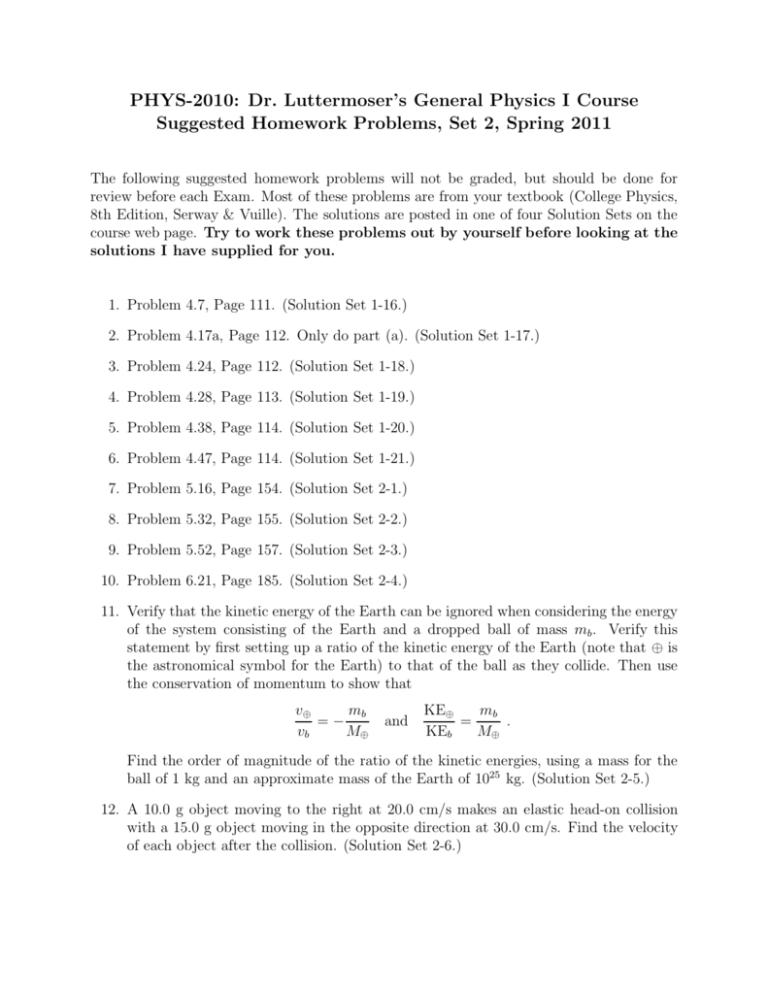
PHYS-2010: Dr. Luttermoser’s General Physics I Course Suggested Homework Problems, Set 2, Spring 2011 The following suggested homework problems will not be graded, but should be done for review before each Exam. Most of these problems are from your textbook (College Physics, 8th Edition, Serway & Vuille). The solutions are posted in one of four Solution Sets on the course web page. Try to work these problems out by yourself before looking at the solutions I have supplied for you. 1. Problem 4.7, Page 111. (Solution Set 1-16.) 2. Problem 4.17a, Page 112. Only do part (a). (Solution Set 1-17.) 3. Problem 4.24, Page 112. (Solution Set 1-18.) 4. Problem 4.28, Page 113. (Solution Set 1-19.) 5. Problem 4.38, Page 114. (Solution Set 1-20.) 6. Problem 4.47, Page 114. (Solution Set 1-21.) 7. Problem 5.16, Page 154. (Solution Set 2-1.) 8. Problem 5.32, Page 155. (Solution Set 2-2.) 9. Problem 5.52, Page 157. (Solution Set 2-3.) 10. Problem 6.21, Page 185. (Solution Set 2-4.) 11. Verify that the kinetic energy of the Earth can be ignored when considering the energy of the system consisting of the Earth and a dropped ball of mass mb . Verify this statement by first setting up a ratio of the kinetic energy of the Earth (note that ⊕ is the astronomical symbol for the Earth) to that of the ball as they collide. Then use the conservation of momentum to show that v⊕ mb =− vb M⊕ and KE⊕ mb = . KEb M⊕ Find the order of magnitude of the ratio of the kinetic energies, using a mass for the ball of 1 kg and an approximate mass of the Earth of 1025 kg. (Solution Set 2-5.) 12. A 10.0 g object moving to the right at 20.0 cm/s makes an elastic head-on collision with a 15.0 g object moving in the opposite direction at 30.0 cm/s. Find the velocity of each object after the collision. (Solution Set 2-6.)
